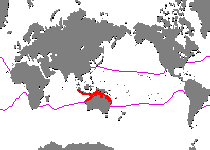
 www.frogfish.ch
www.frogfish.ch

|
Eastern
Atlantic If not from the areas above |
Identification Key Frogfishes
Tropical Australia - Frogfishes with long lures
(Great Barrier Reef, Timor Sea, Gulf of Carpentaria, Ningaloo)
![]()
All frogfish species listed here are living in the tropical Australia
and are not striped.
For striped frogfishes living in the tropical
Australia click here.
For a overwiew of all frogfishes from this area click here.
![]()
These frogfishes are common in tropical Australia and have a long luring apparatus:
Antennarius commerson and Antennarius pictus are the frogfishes most commenly found in Australia. They like to sit on exposed areas and are quite large. Unfortunately they both belong to the so called Pictus-group and it is quite difficult to distinguish them. Means of identification for frogfishes of the Antennarius pictus group.
Antennarius commerson (Giant frogfish)
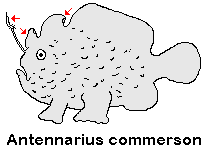 |
Information30cm |
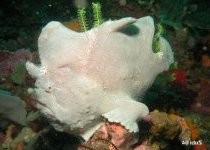 |
|
|
|||
Antennarius pictus (Painted frogfish)
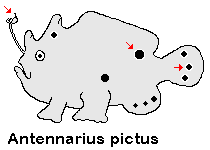 |
Information10-16cm |
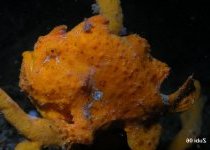 |
|
|
|||
Abantennarius coccineus and Abantennarius nummifer both belong to the genus Abantennarius (formerly Antennatus) and are difficult to distinguish from each other. Here some characteristics that might help with an identification:
Abantennarius coccineus - Lacks distinct tail base (dorsal and anal fins
end at base of tail fin)
Abantennarius nummifer - has a large darkly pigmented basidorsal spot. The
lure can have different shapes, but is mostly small and most of the time
round but sometimes with filaments and dark swellings.
Abantennarius coccineus (Freckled frogfish)
 |
Information9-13cm |
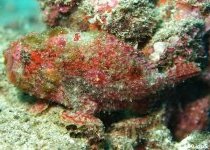 |
|
|
|||
Abantennarius nummifer (Spotfin frogfish)
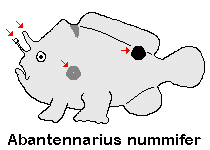 |
Information10cm |
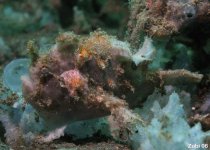 |
|
|
|||
![]()
These frogfishes are uncommon tropical Australia:
Allenichthys glauerti (Glauert's Frogfish - Glauert Anglerfisch)
 |
Information19cm |
 |
|
|
|||
Abantennarius rosaceus has a long 2nd spine with small bushes.
Abantennarius rosaceus (Rosy frogfish, Spiny-tufted Frogfish)
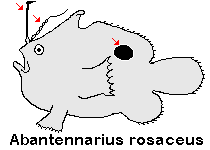 |
Information4cm |
 |
|
|
|||
Antennatus tuberosus shows honeycomb patterns on its skin, its color is yellow, redish and pink and it has a striped tail.
Antennatus tuberosus (Bandfin frogfish)
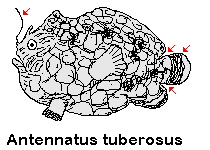 |
Information7cm |
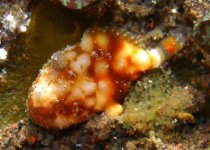 |
|
|
|||
Lophiocharon trisignatus differs from other frogfishes by the many ocelli (eye spots) on the tail which seem to be nearly transparent.
Lophiocharon trisignatus (Three-Spot Frogfish)
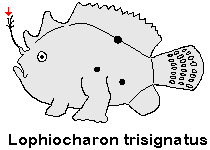 |
Information14cm (18cm?) |
 |
|
|
|||
Tathicarpus butleri has a long rod and transparent membranes between the fins.
Tathicarpus butleri (Butler's Frogfish)
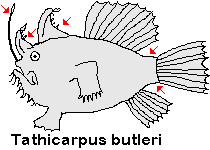 |
Information10-12cm |
 |
|
|
|||
![]()
This identification key is only for species of the subfamily Antennariinae
(frogfishes, family Antennariidae, suborder Antennarioidei) which are
frogfishes living in tropical and Subtropical waters.
Please take note, that this is a simplified identification key. Ichthyologists
use tables with the number of dorsal, anal and pectoral rays, the length
of the illicium and other distinguishing characteristics for means of
identification.














